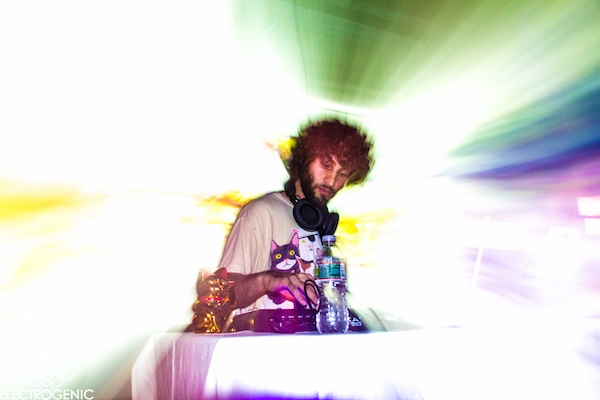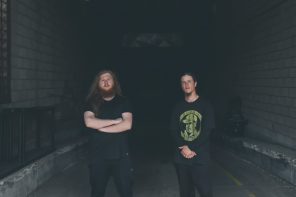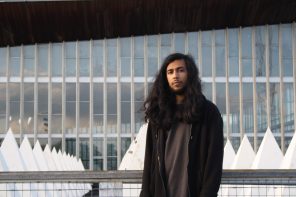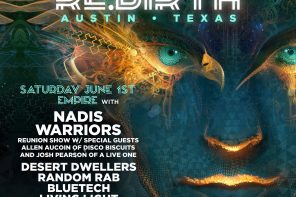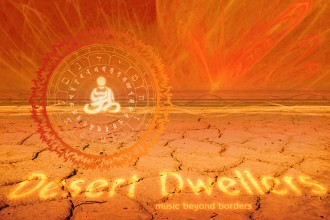Transcending the typical barriers between electronic and more traditional composition, this unique sonic synthesis is equally suited for both headphones and the dancefloor. Exceptional command over detail, depth of expression, and the ability to perform in a multitude of settings leaves the future looking very bright for this emerging artist.
Released last month on Afro Monk Records, the much anticipated debut album, The Science of How Things Unfold, showcases Futexture’s technical talents and inspired song-writing at a variety of tempos. Spanning the full range between dancefloor ready tracks and thought-provoking downtempo tunes, the album explores a variety of emotions and musical forms in a distinct and mature style – something rare to find in a producer so young. Like a deep breath of fresh air on a cool mountain morning, Futexture’s music invigorates the mind, reenergizes the spirit, and invites you to fully immerse yourself in the timeless splendor of now.
Listen to the album below and keep scrolling for a look inside Futexture’s mind…
EXCLUSIVE LIS MIX:
What was your main intention for the new album, and how did you approach creating that intention audibly?
I personally feel very strongly that the intention behind a piece of art influences its aesthetic nature and the experience of the listener or viewer in subtle ways, so I’m glad you asked that question. I had a professor in college who disagreed with assigning value to artistic intention, on the basis that one could never truly be certain of the artist’s intention. It was always a point of contention between us. His argument was that one day an artist could claim one thing about his intention behind the piece of art, and say a completely different thing the next day, and one could never be certain what was true. My argument was, and still is, that if there is a genuine intention infused into the creation process, there is nothing the artist can say to disassociate the original thought patterns and emotions that went into the art after the fact. There is a unique vibratory signature which is embedded into the work itself that exists on a subtle level regardless of what the artist later claims about it.
So on some level, I feel as though this is partially why some people resonate with specific music or art more than others. There is a resonance that happens between the genuine intention of an artist and the subconscious tendencies and qualitative needs of the audience. For example, it’s like if what motivates your art is bitches and money, even if you aren’t saying that out right through lyrics, there is a quality of the music that is going to express that. Your audience is probably also going to have similar motivations. If your trying to express beauty, love, and healing through your music at a core level, its going to shine through as well. Of course pure intention alone doesn’t make up for lack of technical skill or musicality, but it adds subtle nuances that can be picked up on. It can be difficult to explain, because it’s more of an intuitive feeling kind of thing than a concrete melody or harmony that can be expressed through the traditional language of music. Of course these intuitive feelings have to be considered subjective, but my point is that there is an objective intention guiding the experience from its origin.
For example, if what motivates your art is bitches and money, even if you aren’t saying that out right through lyrics, there is a quality of the music that is going to express that.
Given this, it’s totally up to you to listen to it and experience it as you will. I’ve been very interested to see how people respond to to the music, and some pretty cool things have been happening with the way people seem to be understanding and interfacing with it.
Music is an extension of my own life. We exist in, and as, this complex vibratory matrix we call reality, and my intention for the music I create is to express the way I experience it. I feel like the album is a map of my existence over the past year and a half. Each track is like an auditory guide to a certain combination of thoughts, feelings, emotions, interactions, and experiences. There’s a certain flow that happens when I write. I’ll look up at a clock and its 5 AM and a track will have just kind of happened. I feel more like an antenna for musical ideas than a musician, and in some sense, I feel like it’s my own experience being transmuted into sound. I sort of have to mentally get out of the way sometimes and just let it happen.
One of the primary focuses of my own life over the past few years has been experiencing connection to nature and the divine source through fully experiencing the present moment. Those moments of feeling fully integrated into the love-flow and having no separation between your mind, heart, physical body and the rest of the universe are what motivate me most intensely. Being able to channel these fleeting moments of divinity into audible vibration is one of my main goals, and hopefully I can help to catalyze similar experiences in others. Maybe it sounds pretentious to think it could effect people in that way, but some of the most powerful moments of ecstatic unity I’ve ever had have been provoked through music. So, in a way, I’m just trying to return the favor – making music is a way for me to express my gratitude for music itself.
So, in a way, I’m just trying to return the favor – making music is a way for me to express my gratitude for music itself.
On a more concrete level, constantly pushing my technical and musical boundaries is an intention as well. Every time I sit down, I try and experiment with something new, or do something in a different way to see if it works or not. Being able to create something that has never existed before is a big motivating factor for me. When you hear a sound that’s truly new, you’re literally creating new neural pathways in your brain which lead to new thought patterns – and if you want expansion of consciousness, there ya’ go. The deeper I can learn to sculpt sound, the greater impact the music is going to have.
I feel like I’m really only scratching the surface with this album, and the sounds are only going to get weirder from here….
Can you tell us a little about your work flow, maybe a few tricks?
Well I use Ableton Live for both my production and live set. I’m actually still using Version 7 right now. I use a lot of field recordings layers, and try and keep my field recorder with me wherever I go. I have a pretty big collection of water samples I’ve taken myself from all over the world. Waterfalls, streams, and oceans make appearances in pretty much every one of my tracks. They’re great to use instead of synthesized white noise sweeps. I’ll usually start with a beat and then add chords or a bass line, although I tend to start tracks differently depending on what’s in my head when I start them. I use mainly VST’s and also use a Dave Smith Instruments Tetra analog synth… a lot of the plucked synth sounds come from that. Some of the VST’s I’m into right now are Vanguard and Gladiator, and I love Native Instruments plug-ins – Massive and Reaktor especially. Reaktor is so powerful, it’s just ridiculous. I really love the color and depth that the PSP plugs have, and the Sonnox Oxford plugs for transparent EQ and compression.
As far as tricks go, theres nothing thats going to make you into a great producer or musician overnight, but I’ll share a couple tips. Time is everything. The more time you spend, the better you’ll be. I once asked Ott how his music sounded so damn crisp and good, and his response was, “Well, I’ve been producing records for 30 years.” Recognizing that there’s always something new to learn or perfect is pretty important. Things are always going to be able to be tweaked to sound even better, and taking the time to experiment and learn how to do that is really key. I love hearing stuff that makes me want to learn how to push sound even further. I’ll share a couple technical tips that I use pretty often though.
I once asked Ott how his music sounded so damn crisp and good, and his response was, “Well, I’ve been producing records for 30 years.”
– Listen to your mix on multiple sound systems, unless you’re completely confident in your familiarity with your monitors (and even then, check your mix in your car).
– Listen to your mix extremely softly and make sure that it translates well – it’s easier to hear things that are unbalanced at low volumes.
– Compare your mix to the best possible tune you can find with a similar feel or style. It might make you feel bad comparing your tunes to Tipper, but it’ll help you improve a lot quicker.
– Take breaks when mixing. Your ears get tired, there’s no avoiding it. I’m definitely guilty of not moving from my computer for 6 or 8 hours at a time, but it’s a good idea to try and take a 15 minute break every 2 hours or so.
– Listen to something other than electronic music. Throw on something harmonically rich and interesting like jazz to take a break from predominantly modal electronic music.
– Hi Pass filter any sample that doesn’t have an active low end, to prevent recording artifacts from eating up headroom.
– Layer sounds and learn to EQ them, so they fit together like a well-designed sonic puzzle.
– Cutting frequencies is often more effective than boosting frequencies, and will give you more space in your mix.
– For EQing drum sounds, start with the highest Q possible with a high gain, so you can hear the resonant peak. Then when you’ve tuned the sound where you like it, bring the Q and gain down for a more gentle boost or cut.
– Record your own sounds. If you’re looking for originality, layering a trashcan rolling down stairs with a pelican screaming and a bunch of sloppy noodles hitting a garage door will give you better results than picking a snare sample out of the Club Bangers Vol. 4 sample pack.
How did the initial release go?
Exactly as it went. Pretty good, as far as I can tell. People seem to be resonating with the album, and it hung out at #1 on the addictech.com new release charts for a few days, before Mr. Bill’s new album came out. I didn’t really have any expectations since it was a debut album, so it’s definitely exceeded my expectations. The response has been bit a overwhelming, and it’s been pretty humbling to hear people’s responses. I’m so grateful to have the kind of support I’ve been getting from some really incredible people. Mostly I’m just happy I get to write some new music now.
How did your relationship with Afro Monk Records develop?
I’ve followed the Afro Monk blog for a year or two, and last winter I messaged John-Michael (Afro Monk) to tell him I appreciated the stuff he had been posting recently and was liking the direction where he was taking things. I had just finished the album for the most part and was looking around for a label to release it. It just so happened that he was looking to start up a downtempo/future bass label, and things went from there. I couldn’t ask for a better working relationship, and I think some really awesome music is going to be released on the label in the future.
What’s next as far as festivals and shows?
This summer I’ll be playing at Gnarnia Festival in Boone, NC and Rootwire Festival in Ohio. I’ll also be going to Symbiosis Gathering in Nevada and Sonic Bloom in Colorado and will be doing some rogue sets there. I’m traveling out west this summer, so there will be some sporadic dates here and there in Cali and some other places. Check my Facebook page for updates on that.
I’m very grateful to have just been picked up as a new artist addition to Re:Evolution‘s booking roster, so I’m pretty excited to be working with those guys. We’re planning a fairly extensive fall tour on the East Coast.
As far as long term plans go – more music and a fully integrative live audio visual show with a very talented video artist, VJ Deloscinari – as well as some more experimental stuff thats been brewing in my head for a while. We’ll see how it unfolds.
What are the benefits of being managed by Re:Evolution?
Its pretty nice not to have to worry about booking shows. I’ve been booking myself for the past couple years, and it’s one of those things that just takes away time from creating. I’d much rather be writing music than spending time on the phone and emailing promoters and venues.
I feel very fortunate to be involved with an agency like Re:Evolution though. The motivation and intention of the agency is right in line with my own, and I think they’re really working to push music that embodies the healing capabilities of sound. They’re not trying to be a money making machine at the expense of the art itself. We’re just starting out, but I think its a partnership that is going to grow beautifully.
What are the tracks and why did you choose them?
The mix is a combination of some tracks off of The Science of How Things of Unfold, a couple of unreleased originals, and a couple of tracks I’ve been digging recently. I wanted to do something that showcases some of the techstep/futurebass/footwork stuff I like but also has some variation in tempo as well. I’m a big fan of sets and mixes that move seamlessly between styles and tempos but still can make sense the whole time.
What is your definition of the Shamanic Artist?
Any person who recognizes the power of of their music or art to manipulate consciousness is shamanic by nature. Once that initial awareness is realized, you can take it however far you want. There are an endless variety of practices and techniques available, but personal experimentation and intention is really a key component. In traditional shamanism, herbs or entheogens are typically used to alter consciousness, and the shaman directs and manipulates the experience. In this case, music is the tool rather than a substance – although in the right setting, the combination of the two can augment the experience of both. The resulting effects are heavily dependent on the intention of the artist, like I talked about earlier, and thus can be positive or negative.
Opposing forces of light and dark manifest in many shamanic traditions, for example the Curanderos (healers) and Brujos (sorcerers) in South America. People go to Curanderos to heal their illnesses while people go to Brujos to curse their neighbors. In this case, I don’t feel its very likely that people are intentionally evoking negativity and darkness through their music or art, but the lack of attention to intention sometimes has the same result. I’m not saying that there are evil musicians at work or anything like that, but I feel like some people are careless with the way they approach their art, and are just trying to make people lose their minds while rolling balls. And although that’s all some people want, that kind of thing loses its appeal pretty quickly if there’s nothing else of substance involved. Its pretty self serving in a way. I think you find this with a lot of really heavy dubstep. Personally, I feel a strong responsibility to play the role of the Jedi and not the Sith. Of course its not such a clear cut thing in reality, but I am aware of the power I have as a human and artist. If I have the power to spread love and help foster a positive experience for others, I feel like its my duty to do so to the best of my ability.
Personally, I feel a strong responsibility to play the role of the Jedi and not the Sith.
Art itself is uniquely related to human consciousness. It is a guage of awareness in a way, as well as a catalyst for the development and expansion of consciousness. This isn’t an abstract concept. Being exposed to unique and novel stimuli (seeing or hearing something you’ve never heard before) encourages new thought patterns to occur and new understandings and ideas to emerge. Typically, the most innovative and progressive art being created does not resonate with the general public’s artistic sensibilities at the time it is created. We see this throughout history. There were riots around Henri Rousseau and Salvador Dali‘s art exhibits in the early 1900’s, but they were the most unique and innovative works produced at the time – later to be heralded as genius. Same thing with Stravinsky and Schoenberg’s music. Most people simply couldn’t comprehend the ideas in the work till later on.
Typically, the most innovative and progressive art being created does not resonate with the general public’s artistic sensibilities at the time it is created.
Breaking expectations or developing truly innovative ideas can be very uncomfortable for those who are not ready to experience them, but it is important to push the envelope of what is artistically and conceptually possible for the evolution of human consciousness to continue to occur. I think if you look at the most intelligent and original music being created right now, a similar parallel can be drawn. I think it’s very important for people to be exposed to new beautiful sounds, but it’s also a matter of timing. People find the music and art that is needed when their psyche is ready to experience it, and music and art have a way of finding the people that need to experience it as well. I’m just here to provide a specific experience via sound.
Whats the deal with the cats?
They’re fluffy and omniscient. I’m not sure it gets any better than that.
Futexture on Facebook
Futexture on Soundcloud

